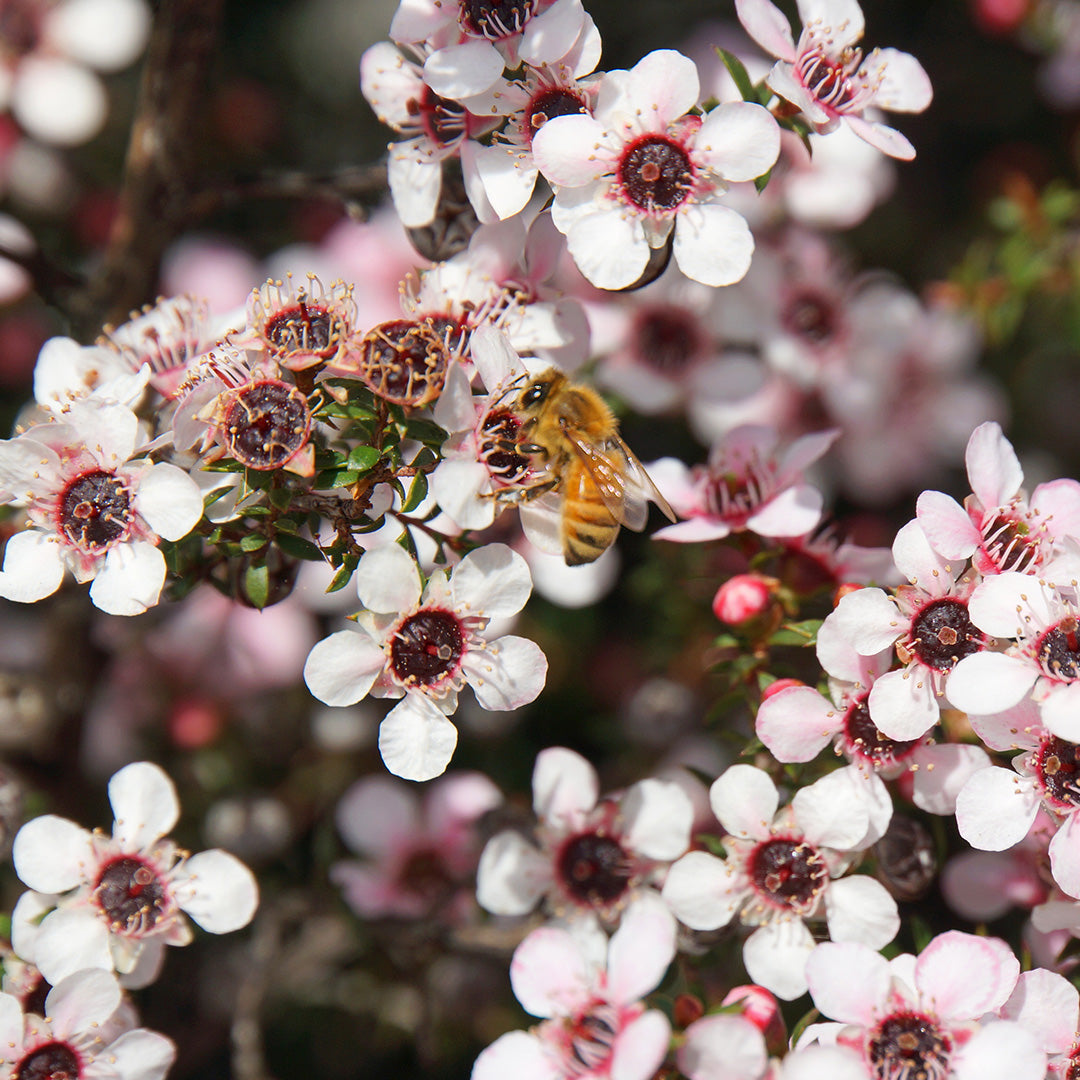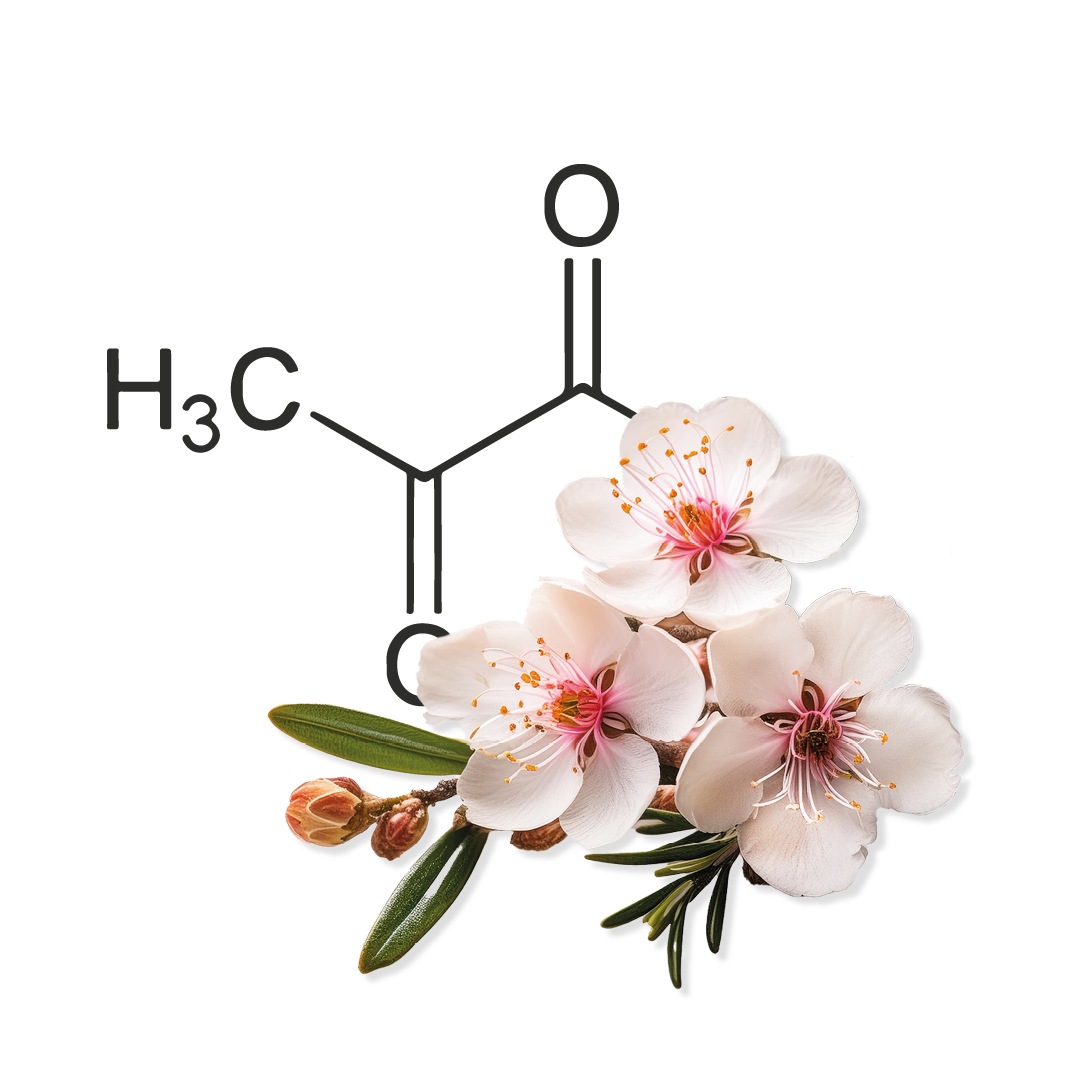
Outstanding raw material quality of our child-healthy organic Manuka honey:
- 100% certified, pure organic Manuka honey from New Zealand
- Tested and child-friendly MGO value of 200+ mg/kg , which is regularly checked and certified by an accredited laboratory
- Particularly child-friendly, delicious and mild-creamy taste
- Bottled in high-quality honey jars without plastic in Germany
Why organic Manuka honey is so valuable:
Our child-healthy organic Manuka honeys are characterized by their age-appropriate MGO value , which is naturally suitable for two age groups : 1-10 years and 10-14 years.
Its scent and taste are unique and cannot be compared to conventional honey. The polyphenols and flavonoids naturally contained in Manuka honey make our children's organic Manuka honey something very special.
Due to its numerous positive properties, Manuka honey can be used to prepare home remedies and to sweeten liquids and foods.


Original organic Manuka honey from New Zealand
The special organic quality, child-friendly Manuka honey for children comes from the nectar of the rare flowers of New Zealand's South Sea myrtles , which were once used as a medicinal plant by the local Maori. The concentration of the natural, particularly valuable ingredient methylglyoxal (MGO) in child-friendly Manuka honey has been optimally adapted to the needs of children aged 1-10 years with over 200+.
The safety and origin are of course checked regularly.
MGO significance in Manuka honey
The special effect of Manuka honey is largely determined by the MGO content and its purity . The MGO value indicates the amount of this ingredient in milligrams per kilogram and serves as a quality measure for the honey. Methylglyoxal can also be found in small amounts in other types of honey, but the higher the MGO value in the honey, the higher the quality.
For comparison, a regular flower honey has an MGO value of 0 to a maximum of 20, while Manuka honeys can reach an MGO value of up to 1000+.


Suitable for my child?
Organic honey is a natural raw food and therefore not suitable for children under twelve months. Consumption is recommended from one year of age at the earliest .

Honestly good
Of course, our organic honeys are natural and do not contain any added sugar syrup or aromatic oils. They also differ in consistency and child-friendly taste.
Questions?

Manuka consumption recommendation
Our natural organic Manuka honey for children can be used for the preparation of home remedies as well as for sweetening liquids and foods.
We recommend taking one to two teaspoons daily, pure or diluted (in milk or tea at a maximum temperature of 40 °C).
Das steckt drin
100% pure New Zealand organic Manuka honey
FAQ - The most frequently asked questions
Organic Manuka honey can be taken by children over one year of age, but as with any honey, it should not be given to infants under one year of age due to the risk of botulism infections.
For children aged 1 year and over, organic Manuka honey can offer many health benefits due to its positive properties, but a moderate amount should always be used and attention should be paid to the MGO value.
For children aged 1 to 10 years, an MGO value of 200 is suitable. For children aged 10 to 12 years, the value can be increased to Manuka honey with MGO 400.
Proper storage of Manuka honey is crucial to maintaining its quality and effectiveness over the long term. Storage instructions:
- Do not store below 6 °C (not in the refrigerator) and not above 25 °C.
- Avoid moisture.
- Store in a dark and dry place.
- Avoid contamination.
Our child-healthy Manuka honey is delivered in an opaque glass container with a screw lid to protect the quality.
If stored correctly, honey will last much longer than stated. However, by law, a best-before date (BBD) must be indicated on commercially sold foods. Manuka honey has a best-before date of two years from the bottling date.
MGO (methylglyoxal) is a natural ingredient that gives Manuka honey its valuable properties. The concentration of MGO in Manuka honey varies and is often used to evaluate its quality and effectiveness.
MGO is formed from the sugar dihydroxyacetone, which is found in the nectar of New Zealand Manuka flowers (South Sea myrtle).
The consistency of honey can change, so liquid honey can crystallize over time.
While many people appreciate the creamy texture of crystallized honey, it is important to emphasize that crystallization, on the one hand, shows that the honey has not been heated too much to preserve its valuable nutrients and enzymes.
Likewise, crystallization of honey can also be a batch-related variation. This natural solidification can be influenced by various factors such as temperature fluctuations, flower composition and storage conditions.

















